This semester, I had the opportunity to participate in the Fujinomori Preservation Society’s Taiko Drumming Practice! Along with one of my fellow KCJS students, I learned the basics of how to play Taiko while also learning more about its significance in Japanese culture. Over the course of the semester, we prepared a roughly 2 minute long piece and performed it for the group, making connections with the team members and practicing our Japanese along the way. At first it was a little intimidating, but once you’re there, it gets to be very fun and rewarding. 
「Activity」カテゴリーアーカイブ
Gaby Jacobs-Alarcon: Weaving
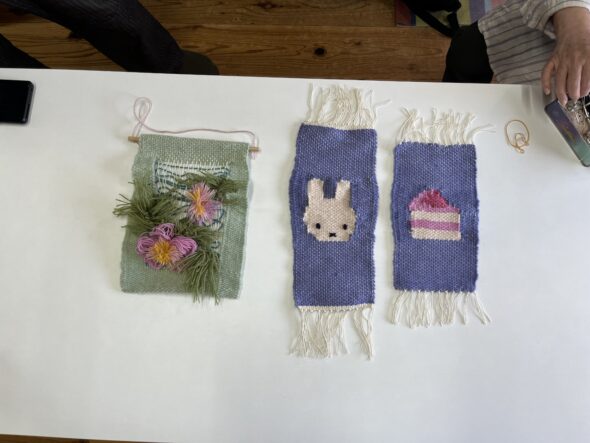
For my CIP, I did weaving with Kawasaki Haruo and Kawasaki Yuri, a couple who have been weaving for most of their lives. I learned how to use a loom to make textiles out of wool and silk.
I think my CIP was one of the most rewarding things from my time at KCJS. I was able to be creative and get help from very skilled weavers while also having nice conversation with my teachers and other students during tea time.
I would recommend anyone to choose this CIP as absolutely no experience is required. You can tailor the experience to fit your needs. If you are more advanced, you can learn how to set up the loom and ask about certain techniques. Kawasaki-sensei has many books of his teachers work and books he was published in with other artists works as well.
I made a silk scarf and 3 tapestries, but I could have made more if I started with a more simple project at first.
If you choose this CIP, I would recommend you think about how much time you have in the semester. There is the ability to go 2 times a week for up to 6 hours each class. When I first did this, I got too tired and had to scale back. Do not be afraid to say no because you are not required to do this. But if you are really interested in weaving this is a great opportunity to go all in. Note that there is a fee, but half of it should be covered by KCJS.
Julia Ramsay: Kyoto Echo Choir
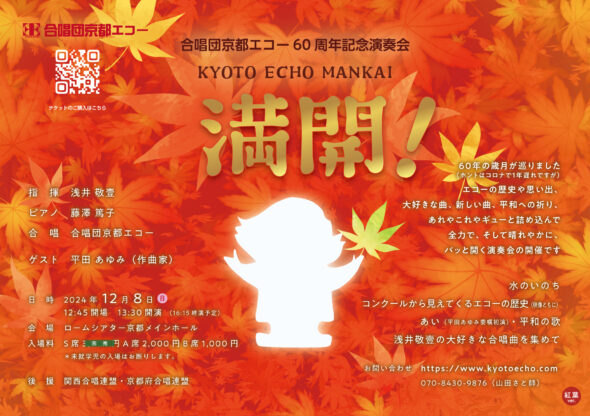
Introduction: Kyoto Echo Choir is a tight-knit, extremely welcoming community choir. They sing choir music in a variety of languages, including Japanese, English, and Latin.
Comments: I had an incredible experience singing with the Kyoto Echo Choir. Not only did I advance my musical ability by rehearsing with a talented group of singers, but my Japanese got better through chatting with the members and sight-reading music in Japanese.
Advice: Kyoto Echo Choir is a very welcoming group, so there are no worries about not fitting in. However, since they take members all year long, they move very quickly musically. If you are considering joining this choir, I would recommend being sure you are confident in your ability to pick up music quickly, since they will not teach it to you directly and in my experience you are not allowed to take the music home to practice.
August Kittleson: Fujinomori Taiko Preservation Society
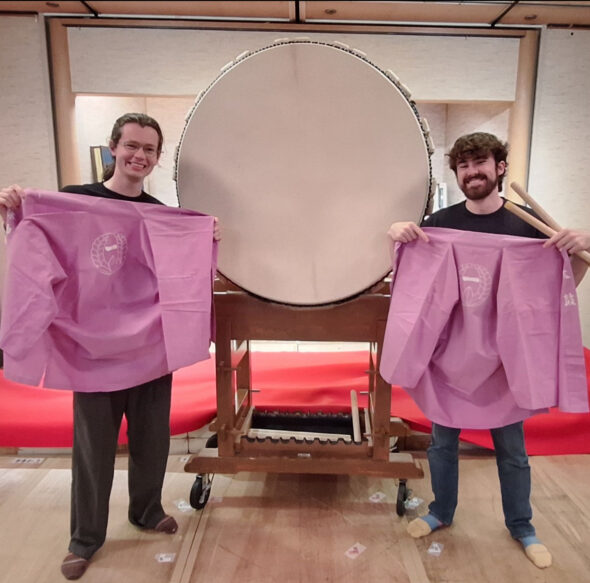
For my CIP, I learned how to perform Taiko drumming with Fujinomori Taiko Preservation Society! This large, multigenerational group met at Fujinomori Shrine twice a week to practice compositions they would practice in many festivals around Kyoto. I loved meeting all sorts of different people while connecting to my passion of drumming. For any incoming students stressed about the prospect of a CIP, it will feel very stressful the first couple weeks. But, after that, things will mellow out and you’ll meet some incredibly friendly, non-judgmental, and playful people ever–that’s when you’ll make so many wonderful memories. But don’t give up!
Evan Arbolante: Volunteer at the local Animal Shelter
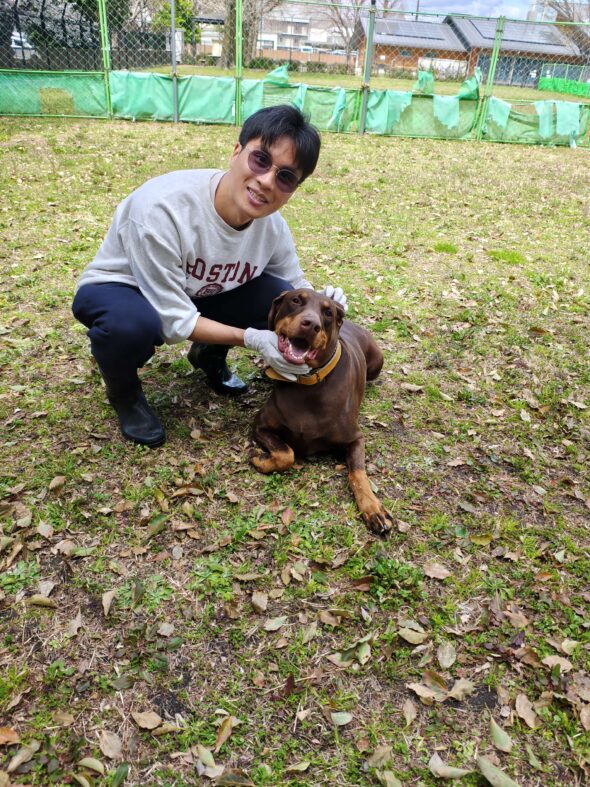
I worked at one of Kyoto’s local animal shelters for my CIP.
I had a great time taking care of the dogs and cats. Some of my responsibilities included walking the dogs, teaching them how to sit and walk alongside you, and cleaning their living spaces.
This CIP is perfect if you love animals and share a passion for protecting and caring for them. For me, it felt like a weekly therapy session where I could destress and build bonds with both the animals and the shelter staff.
For those wondering what CIP to choose, find something that excites you and offers a space to connect with others. The most valuable part of the CIP is that it gives study abroad students a chance to form a special community within Japan. Think about what kind of community you’d like to be part of when deciding on your CIP. No matter what activity people choose, CIP often leaves a warm and lasting place in our hearts—so my best advice is to come excited and ready to participate!
Jonathan Wu: Volunteering at the Kyoto International Manga Museum
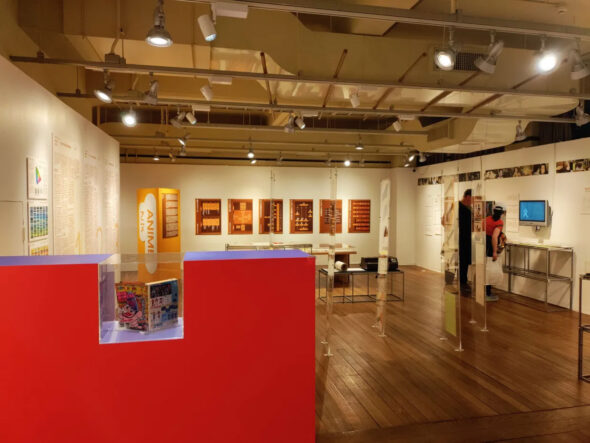
This Spring semester, I volunteered at the Kyoto International Manga Museum, where I assisted with archiving, shelving, and preserving manga while learning about Japanese workplace culture and library systems.
Volunteering at the museum was incredibly fulfilling, not only because of the unique nature of the space itself (a hybrid museum/library), but also because of how much I learned about intercultural communication and the subtleties of Japanese work etiquette. As someone who has personally loved anime and manga for a long time, getting to volunteer in a space dedicated to their preservation and study made the experience even more special. This space was a place of personal growth, cultural exchange, and meaningful connections for me, and I am incredibly thankful to have been given the opportunity to be part of it.
My advice to incoming students and prospective students: Don’t be afraid of discomfort or feeling out of place at first while abroad; these moments are often where the most growth happens. Observe how others interact socially, and most importantly, be curious and open-minded. You’ll be surprised at how much you can learn simply by participating with sincerity and respect.
Kailey Garcia: Hip Hop at FlyDanceStudio
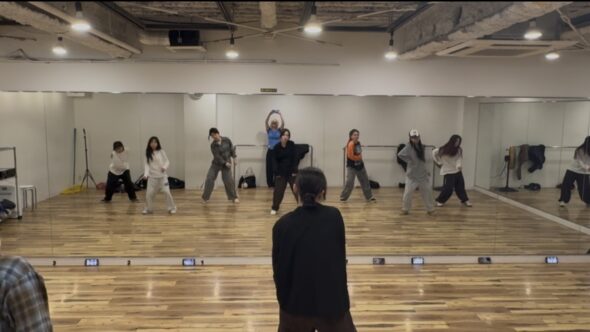
For my CIP, I took weekly hip-hop classes at FlyDanceStudio, located in Kawaramachi. I attended three classes led by Ruka先生、Nana先生、and Neo先生 on Mondays and Wednesdays. Nana’s class was beginner dance, and Ruka and Neo’s classes were taught at the intermediate/advanced level. Regardless of the indicated level, I think every class challenged me each time I attended. Over time, I began to notice gradual improvements in both areas, especially in dance retention and overall confidence. The studio didn’t really foster an environment where I could always talk freely in Japanese since the classes were structured so that the instructor could teach a whole choreo within the set time, but in the moments I did exchange conversation with my classmates and instructors, it was always encouraging. Not just with dance, but also when trying to apply language skills in real life, you’re put in situations where hesitation can hold you back from reaching your full potential. Taking classes in a language that, although I’m learning, I didn’t know the proper dance terminology, I had to learn to not be afraid to make mistakes in order to accurately measure growth. Despite the limited communication in class, every time I walked out of class with more motivation to continue studying Japanese in order to preserve the relationship I had with my instructors. Whether it’s taking a dance class for the first time or when you’re put in flight-or-fight mode, I think the most memorable moments I had in Kyoto were when I pushed myself outside of my comfort zone even if I wasn’t fully confident I could.
Shawn Chen: Koto
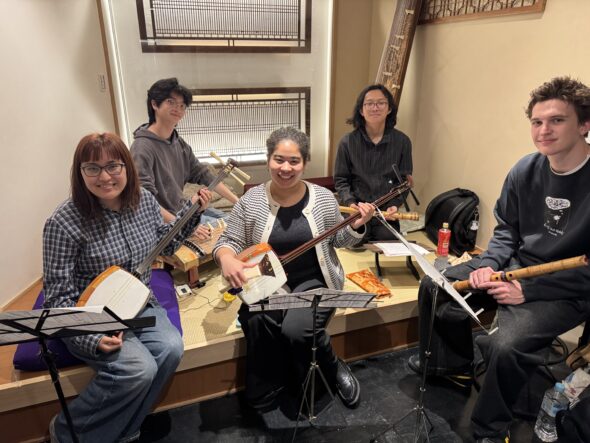
For my CIP, I took Koto lessons with Iwasaki sensei! Koto, shamisen, and shakuhachi are also taught at the studio and there was a chance for me and 4 others to perform together in traditional attire!
While learning the instrument was fun in itself, the community in the studio is definitely the key highlight of the experience. They’re all so welcoming and often help out with teaching.
If you take lessons here (which I highly recommend), I would advise you to never be afraid to ask questions if you have any and to talk about your experiences in Japan as you go. They’re also curious about us and want to hear more!
Jack He: Volunteering at Nalba
画像
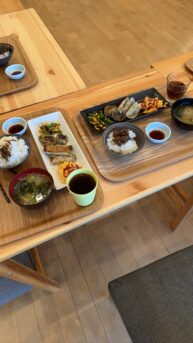
Nalba is a 子ども食堂 (children’s cafeteria) that resembles a afterschool daycare. Primary school students join together to play, eat dinner, and play more. My responsibilities primarily entailed playing with the children and helping with the cooking. Throughout the semester, I made friends with both kids and the adult volunteers who work there. I would wholeheartedly recommend Nalba to those who enjoy playing and spending time with children.
Tyrone Xue: Shakuhachi
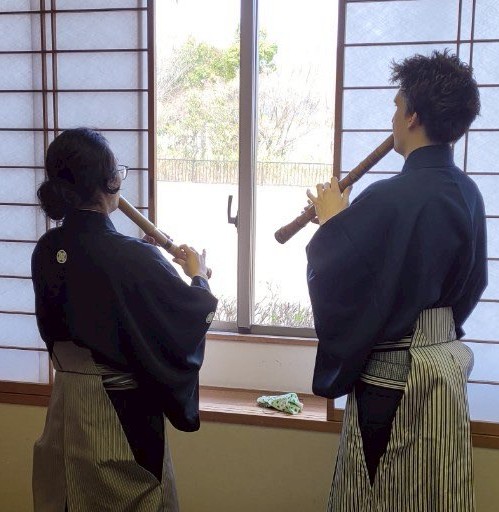
Me (left) and Sam (right) practicing right before our big concert
I took lessons learning the shakuhachi as my CIP. There are different types of shakuhachi playing style, I was learning the Kinko-ryu shakuhachi as it is what my teacher was an expert at. I feel that the shakuhachi is a fairly hard instrument to learn during the start compared to the other traditional instruments like the koto or shamisen, but eventually you get the hang of it. We were invited to play for a concert near the end of our lessons which I felt was an amazing experience, both the pressure and the fun.
If you’re thinking about doing a traditional Japanese instrument, whether it’s shakuhachi, koto, shamisen, or something else, I think you should just go for it. Even if you don’t have any experience in western music because the music sheet and playing method is really different anyways. My best advice is to not go into these lessons to become an expert in the instrument (our shakuhachi teacher himself has decades of experience but he still feels like he has more to learn). Instead, I think it’s best to go into it with the mindset of building human connections. The shakuhachi is one thing, but take some time to ask about the the history, the songs, and the communities. You’ll find yourself learning about a completely new world than just an instrument.
